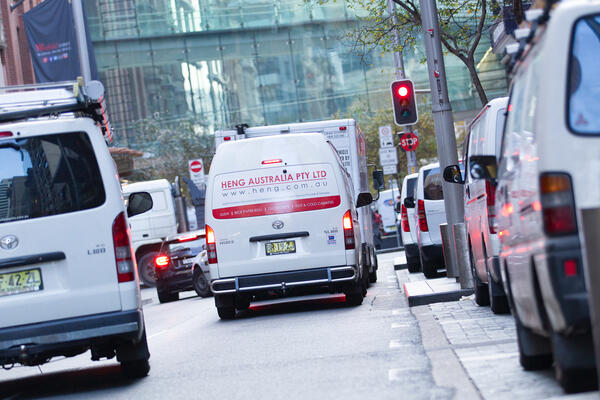
Digital Smart Kerbs for Freight and Servicing
Analysis by Transport for NSW (Transport) in partnership with Campbelltown City Council to assess the use of kerbside loading zones using Digital Smart Kerb technologies.
Background
In 2021, the NSW Government announced the trial of Digital Smart Kerb technologies which include smart sensors and smart signs to help improve our kerbsides for pedestrians, public transport passengers, cyclists, drivers and freight. In collaboration with local councils, several trials of technologies were conducted. The data collected helps councils make decisions about how to best deliver kerbside use by collecting data on how they are being used and how those spaces can be better managed.
Between August 2022 and October 2023, Transport conducted a pilot project in collaboration with Campbelltown City Council to install digital smart kerb technology to collect data on loading zone usage in key central areas in Campbelltown.
The goal of the project was to increase understanding of how kerbs could be better managed to meet community and business needs, influence driver behaviours and therefore improve liveability, productivity and sustainability.
The pilot produced kerbside parking data, which would have otherwise been unavailable, to help Campbelltown City Council plan for parking provisions in the highest demand areas and support placemaking objectives.
Findings
Machine learning techniques were used as part of data collection and over 33,000 events were automatically collected and analysed to provide insights on how kerbs can balance placemaking, parking provision and freight and servicing needs.
Within the pilot, the team found:
- Demand: 11 per cent of activity in general parking bays (not designated loading zones) between 7am and 5pm were commercial vehicles, suggesting a higher demand for loading zones than what is currently provided
- Pattern of vehicular movement: There is a higher desire for commercial vehicles to park in Queen Street (the main street) and before 12pm
- Productivity: There was increased intended use, efficiency and productivity of loading zone space (by 25 per cent), and the average dwell time improving by 10 per cent.
- Compliance: Overall, there was slight improvements in compliance:
- vehicle type non-compliance improved by 2.87 per cent
- overstaying improved by 0.23 per cent.
Documentation
For more information, please contact freight@transport.nsw.gov.au.
